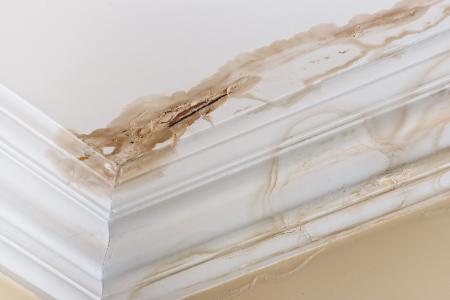How To Fix Peeling Paint in your Bathroom

Peeling is a common issue with bathroom walls that is mainly caused by possible water leaks, build up soap scum and humidity. When paint peels off, it makes your bathroom look bad, and also acts as a breeding site for bacteria and other insects. To prevent your paint from peeling, it’s crucial to work carefully during painting time.
You should also examine your wall to identify if it has lead-based paints since most houses that were built in 1970’s contain this type of paints. Hire expert painting contractors to handle all your wall repairs but in case you want to paint your bathroom walls yourself, here are the steps to follow for a good finish.
Scrape off the Chipped Paint or the Pealing
The first thing to do in amending your bathroom walls is to scrape off the chipped spots. You can use a paint scraper or a knife to remove the paints. You should remove the paints carefully and transfer it along the edges.
Make sure all the peelings and flaking areas are removed and only inflexibly adhered paint is left. To keep your workplace clean, you should use a refuse can or any other suitable container to collect tiny paint particles as they fall. Remember to protect your nose, and eyes to avoid paint particles. Make sure that you put on a powder mask and protective eyewear.
Patch Areas that Had Peeling Paint
Once you have removed all the chipped paint, the paint on your bathroom wall surface will remain unevenly distributed. To make a smooth surface, you should use a putty knife to apply a patching substance to make the wall uniform. Go for a quick setting patching substance and apply a thin and even layer. When the first coat dries, add a second coat if necessary before you apply a drywall compound.
Sand
Just after the drying of your patched wall surface, remove all uneven edges and ridges. Use sandpaper to make the wall even and smooth. You may also use a vacuum cleaning machine which is fitted with a sanding attachment and a dust collection carrier. The shop vacuum will help you collect all the paint particles meaning that there will be no mess to clean up after sanding. While sanding, it’s advisable to protect your nose and eyes from paint particles.
Take Time to Prime
You should use an inbuilt primer paint to protect your walls from peeling. If your walls are not well primed, they will still be victims of paint peeling since primer protects your paint from water and moisture. Oil based primer outputs the best results, and you will not experience peeling on your bathroom walls as long as you apply the primer as required and give it time to dry.
Repaint Your Bathroom
Once the primer dries up, you can now repaint your bathroom walls with a color of your choice. However, it’s crucial to select the right paint to avoid flaking and peeling in future. Use bathroom-specific paint since it’s not susceptible to washing, and has a high gloss finish. This type of paint will serve you for long since it does not absorb moisture.